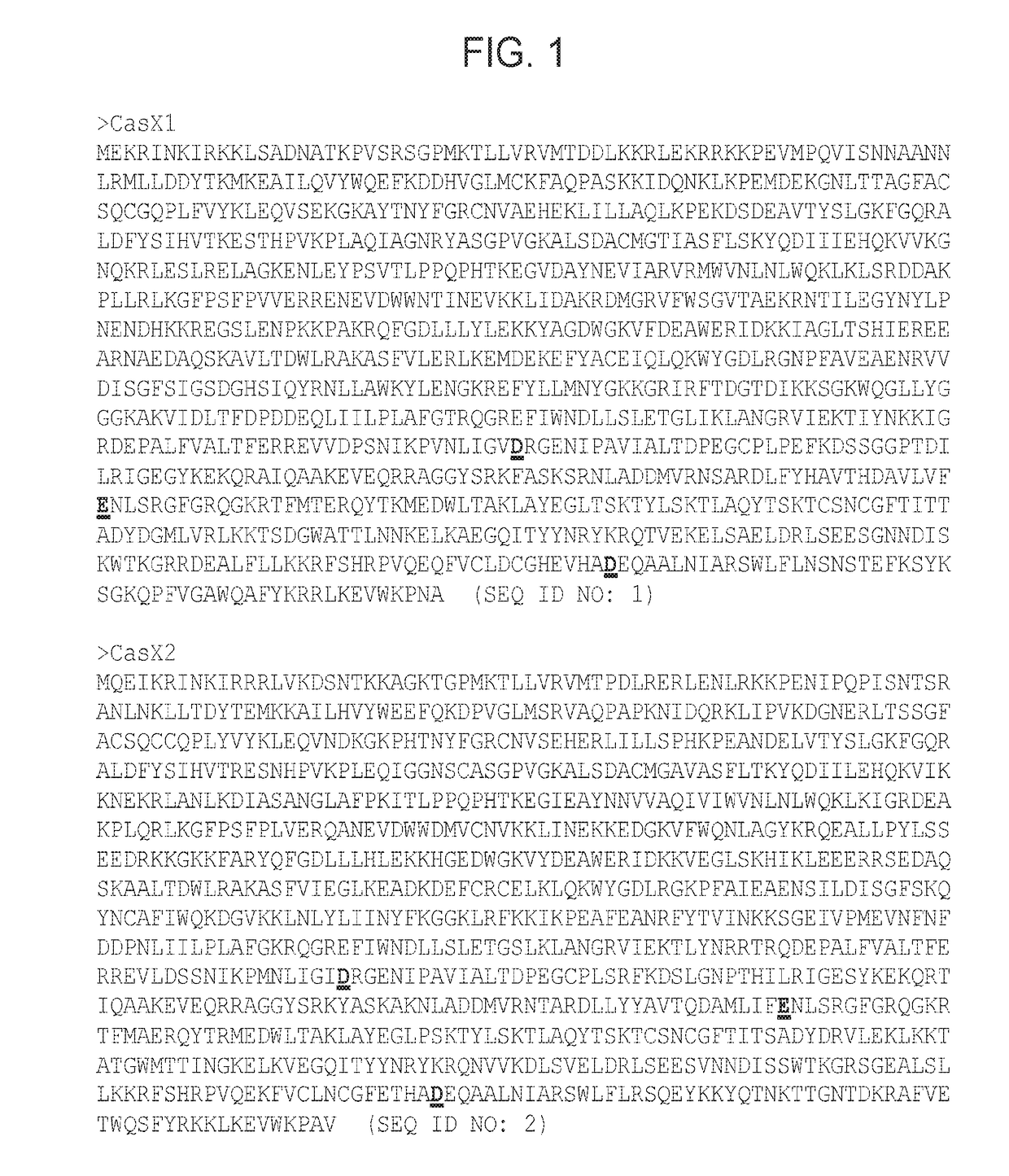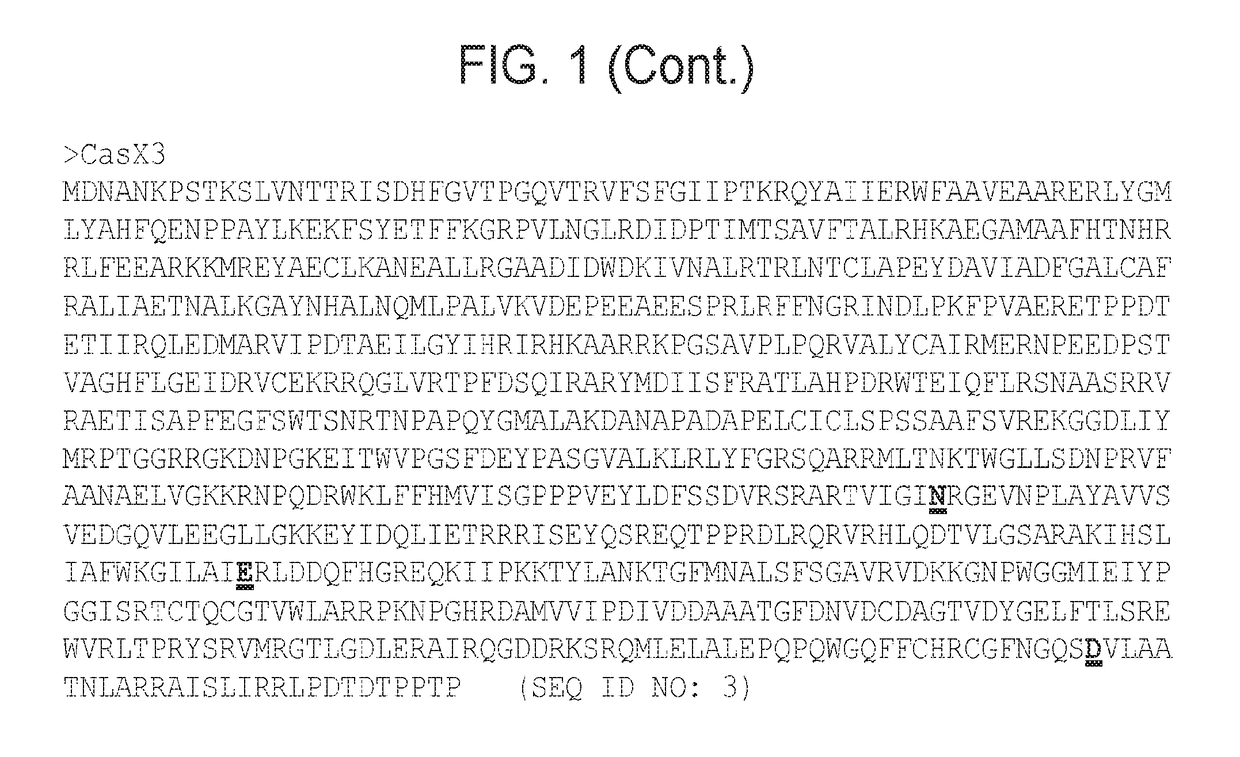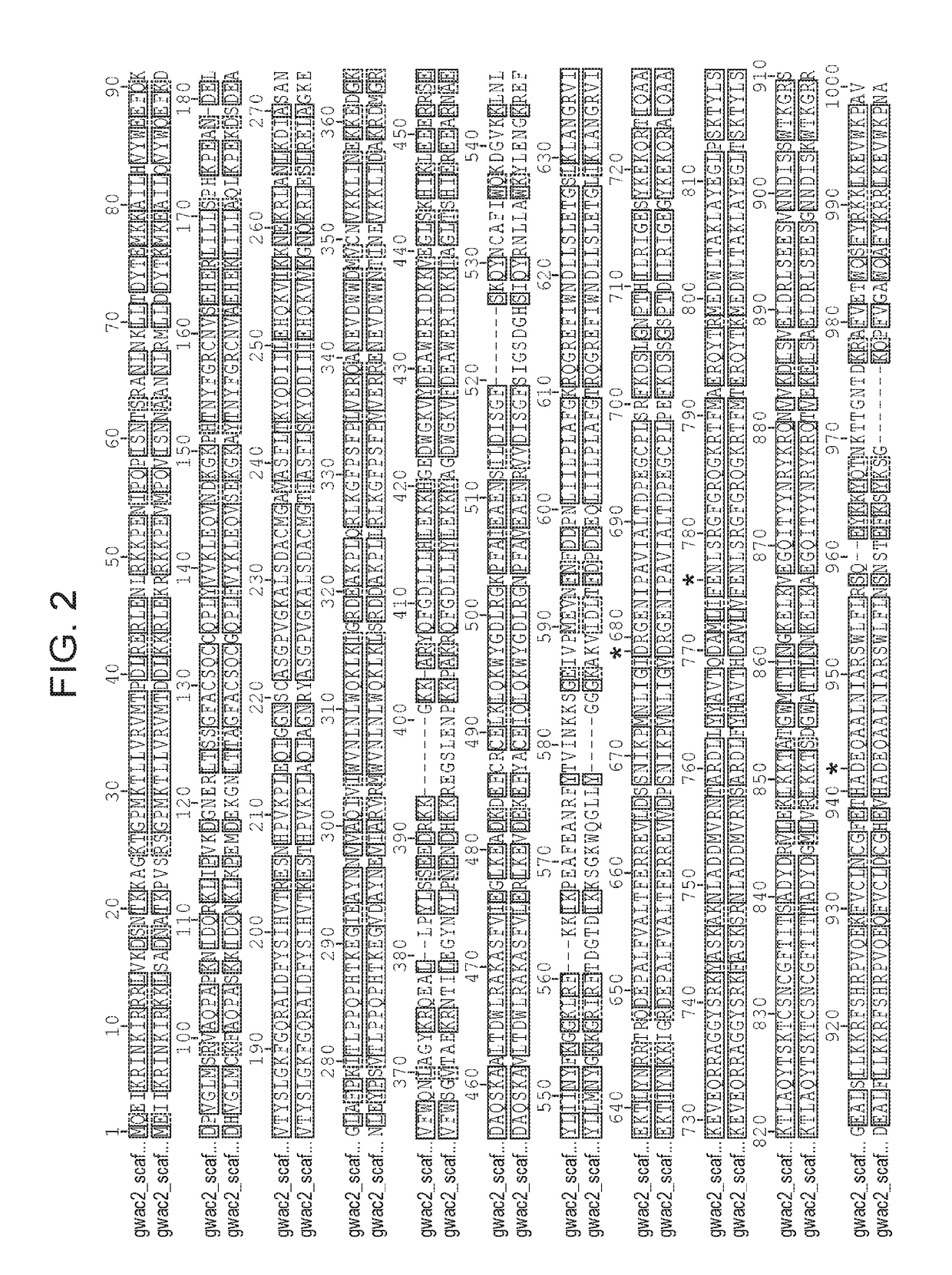Rna-guided nucleic acid modifying enzymes and methods of use thereof
a technology of nucleic acid modifying enzymes and rna-guided nucleic acid, which is applied in the direction of transferases, peptides, viruses/bacteriophages, etc., can solve the problem of leaving untapped the vast majority of organisms that have not been isolated
- Summary
- Abstract
- Description
- Claims
- Application Information
AI Technical Summary
Benefits of technology
Problems solved by technology
Method used
Image
Examples
example 1
[0473]The work described herein includes an analysis of metagenomic samples of microbial communities from groundwater, sediments, and acid mine drainage. New Class 2 CRISPR-Cas systems were identified that are not represented among cultured organisms.
[0474]FIG. 3. CasX domains and similarity searches. (panel a) Schematic domain representation for CasX inferred from distant homolog alignments with AcCpf1, using HHpred. Conserved catalytic residues are marked by red bars above the proteins. CasX contains a RuvC split domain in the C-terminal region (RuvC-I, RuvC-II, and RuvC-III), and a large novel N-terminal domain Below the schematic are displayed top hits based on the following searches: (1) BLAST search against all the proteins in NCBI (NR database, including model and environmental proteins). (2) Profile hidden markov model (HMM) search based on models built using all the Cas proteins described in Makarova et al. Nat Rev Microbiol. 2015 November; 13(11):722-36, and Shmakov et al....
example 2
[0475]FIG. 4 (panels a-c). Plasmid Interference by CasX expressed in E. coli. (panel a) Experimental design of CasX plasmid interference. Competent E. coli cells expressing the minimal interference CasX locus (acquisition proteins removed) were prepared. These cells were transformed with a plasmid containing a match to the spacer in the CasX CRISPR locus (target) or not (non-target) and plated on media containing antibiotic selection for the CRISPR and target plasmid. Successful plasmid interference resultes in reduced number of transformed colonies for the target plasmid. (panel b) cfu / ug of transformed plasmid containing spacer from CasX1 (sX1), spacer from CasX2 (sX2) or a non-target plasmid containing a random 30 nt sequence. (panel c) serial dilution was performed of transformants from panel b on media containing antibiotic selection for both the CRISPR and target plasmid.
[0476]FIG. 5 (panels a-b) PAM dependent plasmid interference by CasX. (panel a) PAM depletion assays were c...
example 3
[0479]FIG. 8. Experimental design for editing human cells using CasX. HEK293 cells expressing a destabilized GFP is treated with CasX using either lipofection of plasmid expressing CasX and its guide RNA or nucleofection of CasX preassembled with its guide RNA. Successful genome cleavage will result in indels in the GFP locus causing a loss of fluorescence signal, which can be detected by flow cytometry and / or surveyor assay (e.g., T7E1 assay).
PUM
| Property | Measurement | Unit |
|---|---|---|
| Fraction | aaaaa | aaaaa |
Abstract
Description
Claims
Application Information
 Login to View More
Login to View More - R&D
- Intellectual Property
- Life Sciences
- Materials
- Tech Scout
- Unparalleled Data Quality
- Higher Quality Content
- 60% Fewer Hallucinations
Browse by: Latest US Patents, China's latest patents, Technical Efficacy Thesaurus, Application Domain, Technology Topic, Popular Technical Reports.
© 2025 PatSnap. All rights reserved.Legal|Privacy policy|Modern Slavery Act Transparency Statement|Sitemap|About US| Contact US: help@patsnap.com



